3.4 KDE Components
Use the settings under the KDE Components category to modify advanced KDE options such as file associations and default applications.
3.4.1 Setting Default Applications for Services
Click .
The Component Chooser module lets you select the default applications you want to use for various services. You can define what e-mail client, embedded text editor, instant messenger, terminal emulator, and Web browser to use. If you prefer to use Xterm, Vim or Mozilla, this is the place to specify those preferences.
Figure 53 KDE Control Center Component Chooser Dialog
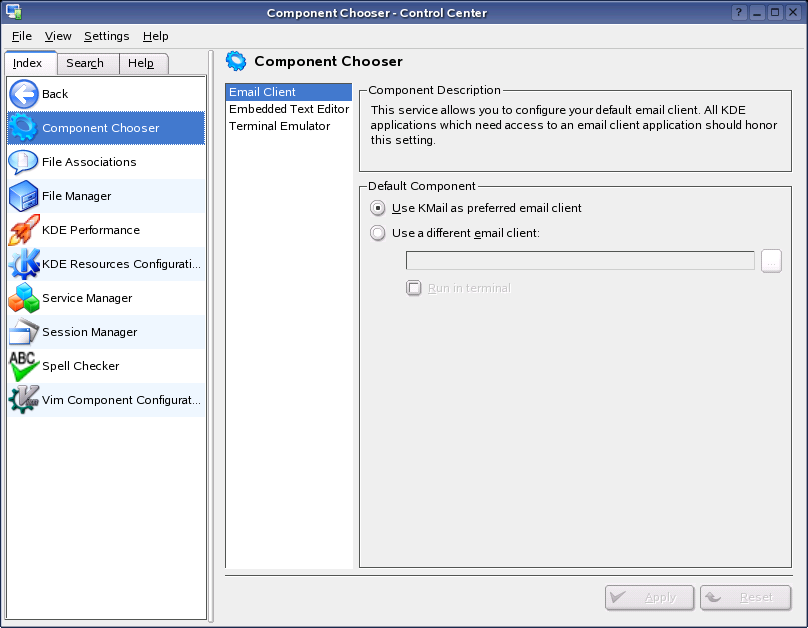
3.4.2 Configuring File Associations
Click .
Use this module to configure everything to do with file associations. You can select a file type and choose what applications you want to open it with. You can also choose which icon you want to represent each file type, and whether to show it in an embedded or a separate viewer.
Figure 54 KDE Control Center File Associations Dialog
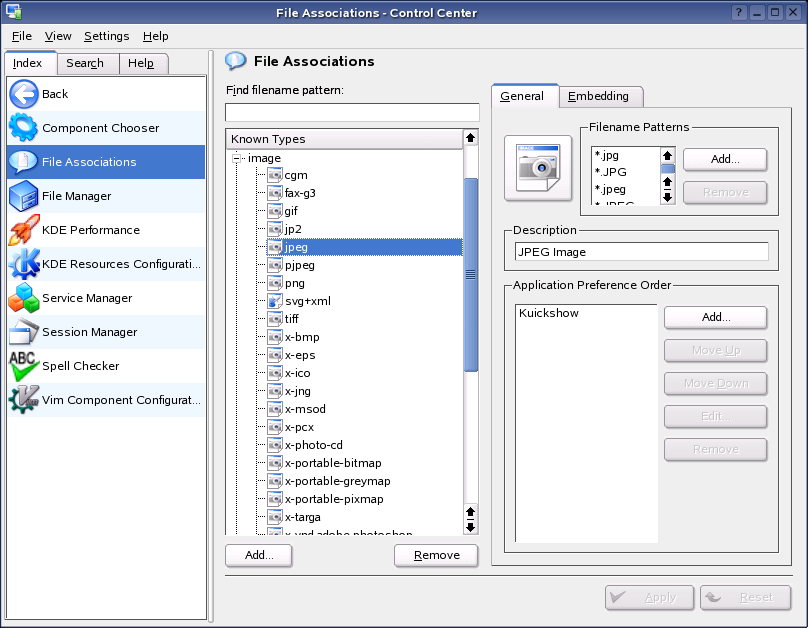
3.4.3 Configuring the Konqueror File Manager
Click .
Use this module to configure the behavior of Konqueror in file manager mode. Among the options are fonts and font sizes, previews over various network protocols, and context menus. Konqueror is an extremely powerful and configurable file management tool with many options. For more information, see The Konqueror Handbook.
Figure 55 KDE Control Center File Manager Dialog
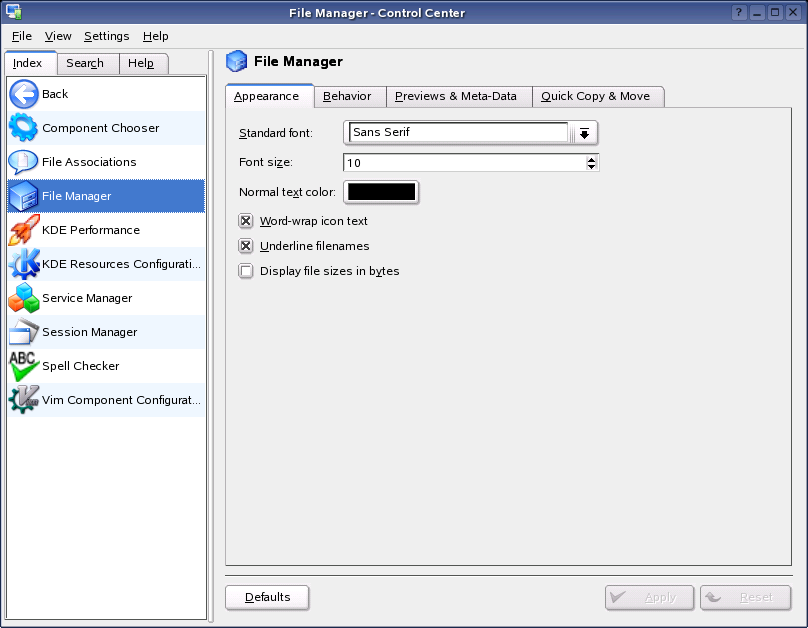
3.4.4 Configuring Konqueror Memory Usage
Click .
Use this module to configure settings related to the memory usage of Konqueror. allows you to control whether separate instances of Konqueror open or whether all new Konqueror windows connect to the same instance. This has the effect of reducing memory usage. You can also select whether to preload Konqueror after KDE starts up, which reduces the start time.
Figure 56 KDE Control Center KDE Performance Dialog
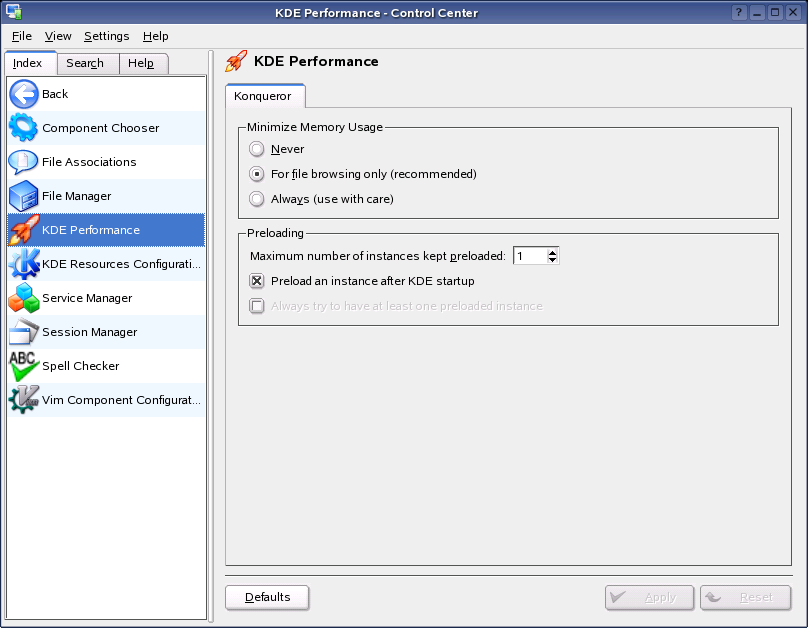
3.4.5 Configuring KDE Resources
Click .
Different utilities (such as e-mail programs) can use multiple resources for loading and storing contacts, calendars, and notes. You can add more resources to the list by using the KDE Resource Configuration dialog.
Figure 57 KDE Control Center KDE Resources Configuration Dialog
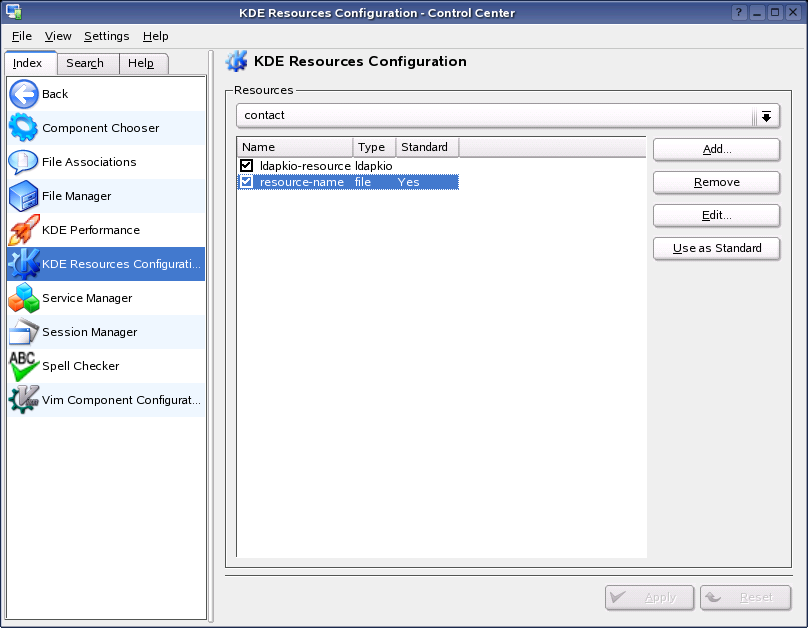
Load the configuration module you want to add your resources to by selecting it from the drop-down list at the top dialog. For example, choose contact as the module for KAddressBook.
You can open the Resource Configuration dialog by clicking . Choose the resource you want to add to your module, then click . The type of resources available to you depend on the Resource you currently have selected.
3.4.6 Starting and Stopping Services
Click .
The Service Manager module displays a static list of services that are started on demand, and a second list of services that can be manipulated by the user. The services in the first list cannot be modified or changed. You can configure the services in the second list to load at startup, and manually start and stop services.
Figure 58 KDE Control Center Service Manager Dialog
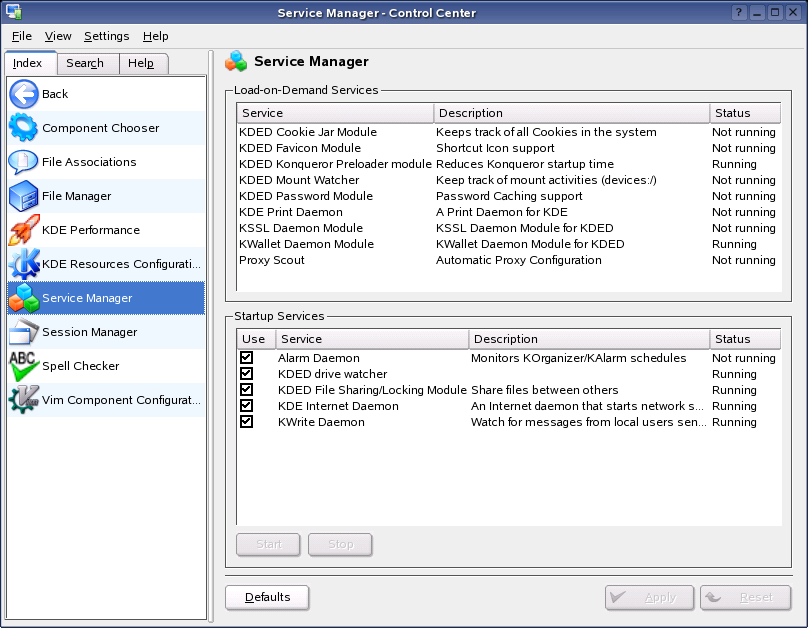
3.4.7 Configuring Sessions
Click .
Use this module to configure how KDE handles sessions. You can configure KDE to remember your previous session and restore the applications you were using the next time you log in. You can also specify individual applications to exclude from being restored, or disable restoring sessions on login.
Figure 59 KDE Control Center Session Manager Dialog
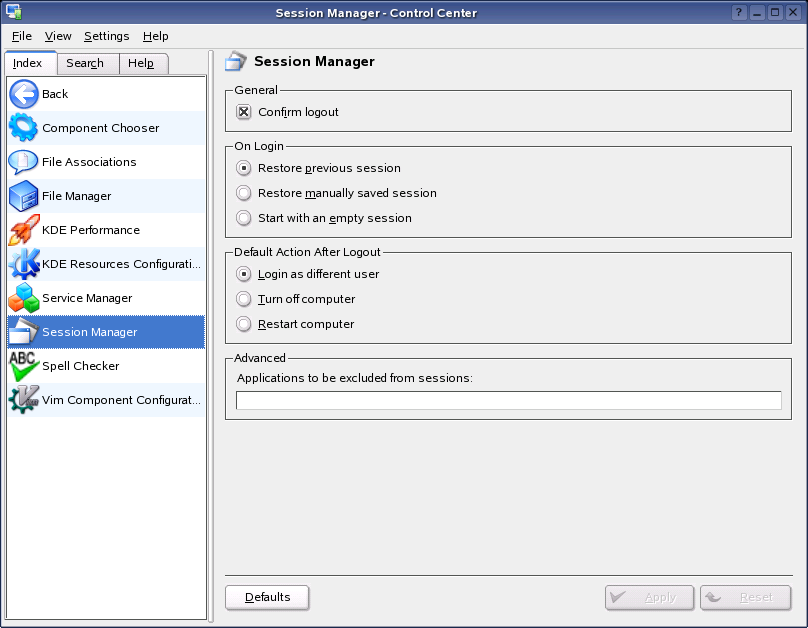
3.4.8 Configuring the Spell Checker
Click .
This module lets you configure the KDE spell checker. It allows you to modify what spell checker to use, what types of error to check for and also what default dictionary to use. KDE supports the use of both ASpell and ISpell dictionaries.
Figure 60 KDE Control Center Spell Checker Dialog
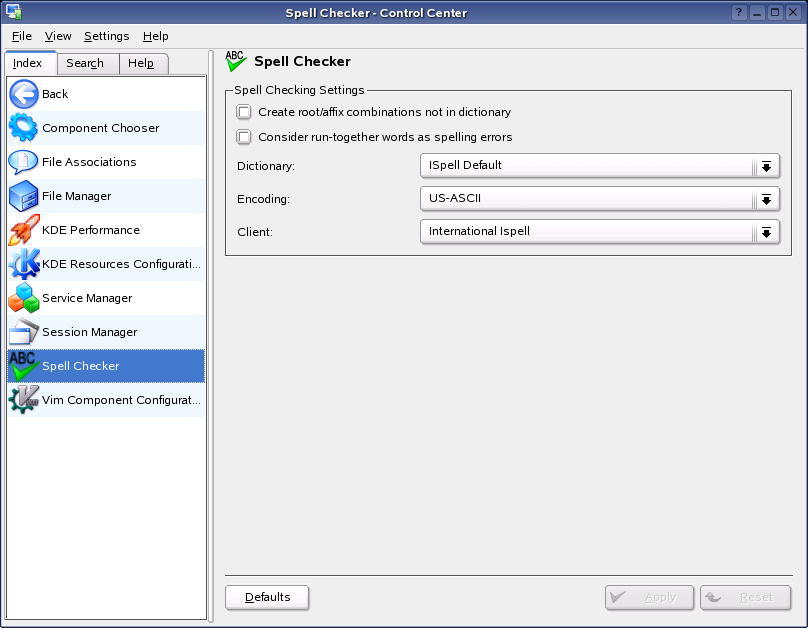
3.4.9 Configuring Vim Components
Click .
Vim is a highly configurable text editor built to enable efficient text editing. It is an improved version of the vi editor distributed with most UNIX systems.
This module lets you configure the use of Vim as an embeddable component. You need to have a recent version of GVim or KVim installed for this. You can configure the appearance of the editor, and which Vim binary to use.
Figure 61 KDE Control Center Vim Component Configuration Dialog
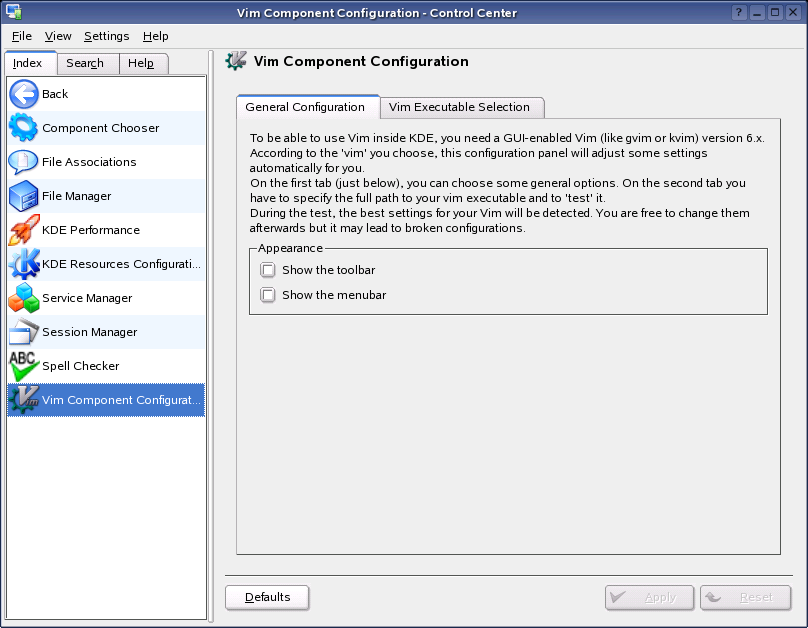
For more information, see Vim the Editor.